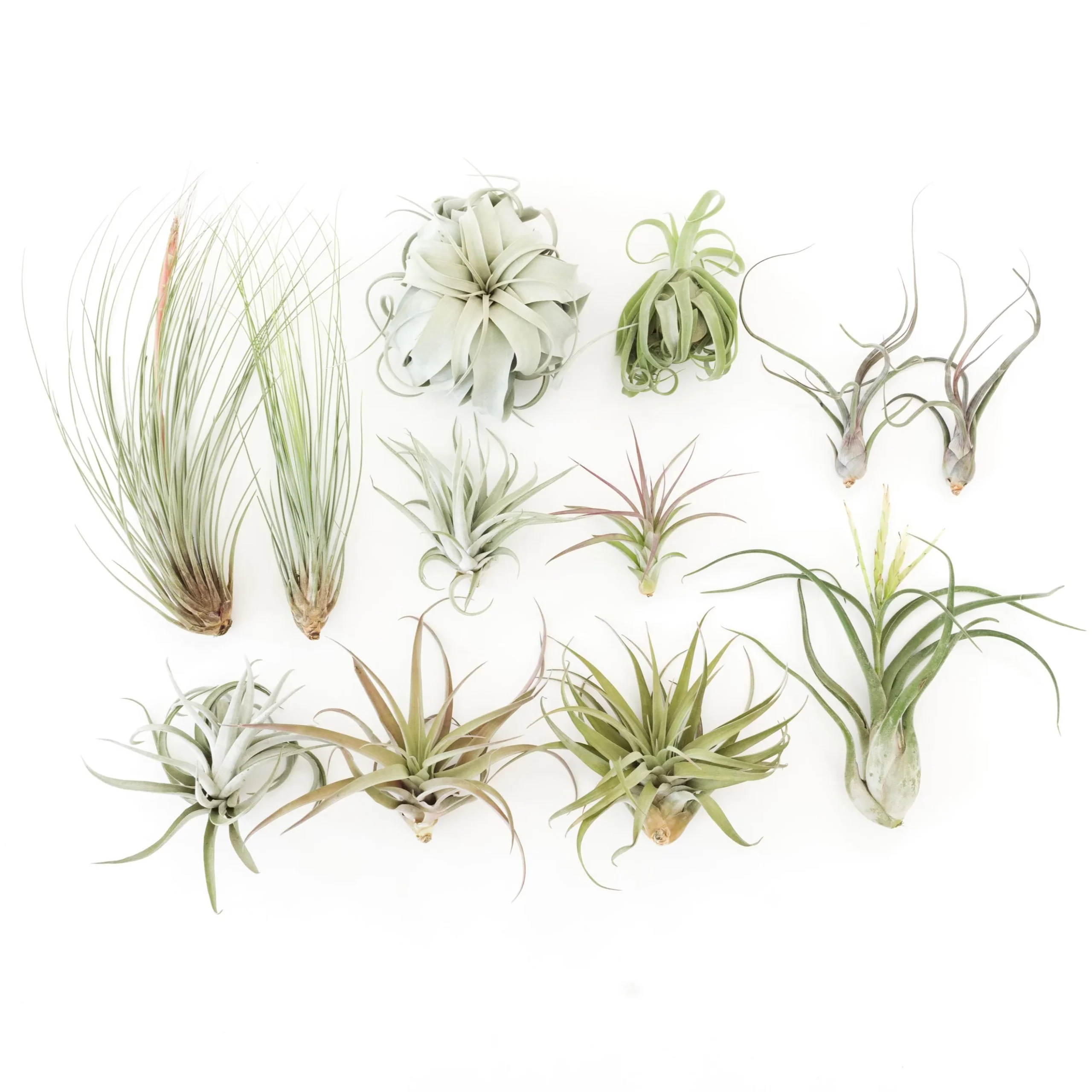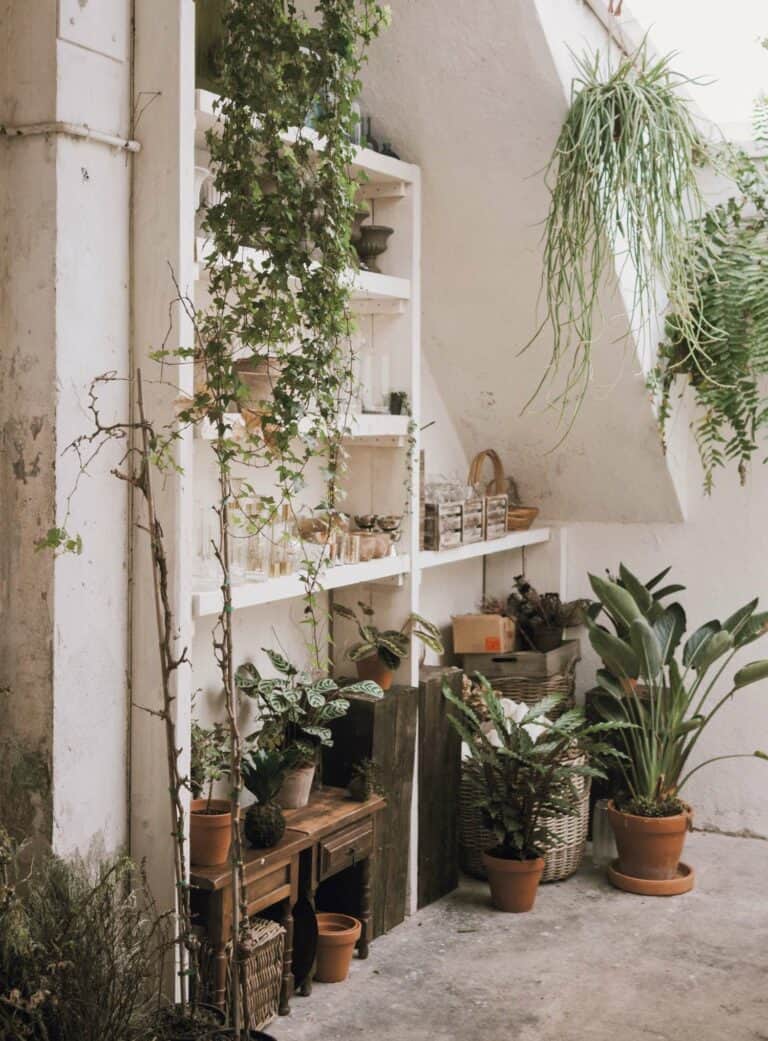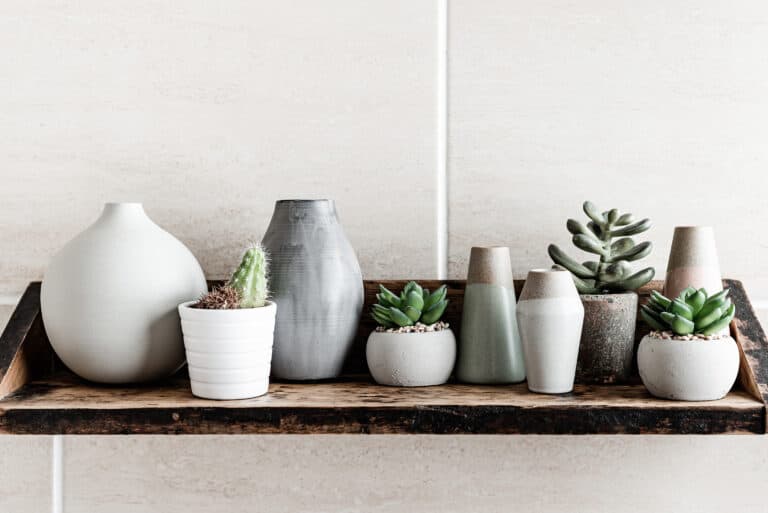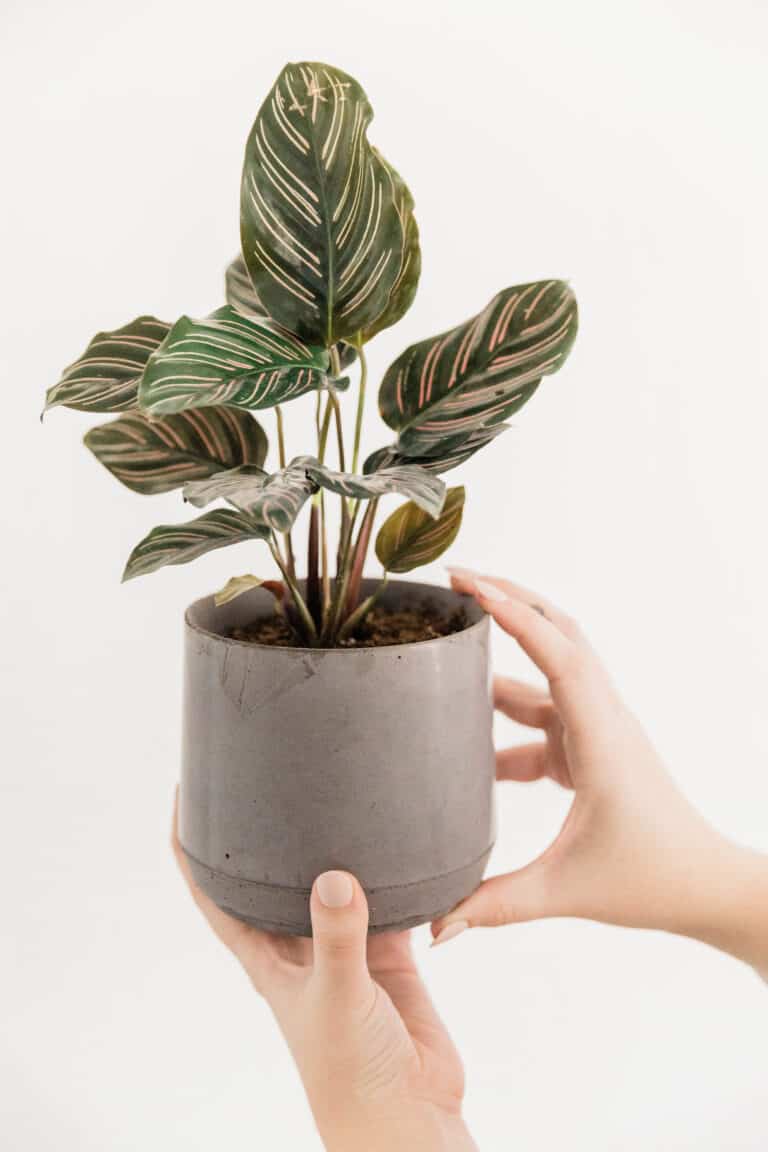The Ultimate Guide to Growing and Maintaining Beautiful Flowering Air Plants
Ever since I accidentally knocked over my grandmother’s antique vase, I’ve been a magnet for catastrophe when it comes to household items.
Seriously, you wouldn’t believe the trouble I’ve gotten into.
My family even made a running joke: “If it’s fragile and beautiful, keep it away from clumsy hands!”
Yet, despite my infamous reputation, there’s been one exception to this rule – Flowering Air Plants.
As contradicting as it sounds, these fragile beauties have not just survived under my care, but flourished!
But here’s the thing, like any delicate thing in life (and in my house!), these aerial wonders need a certain kind of TLC.
And if a ‘chaos-magnet’ like me can learn the art of nurturing these green babies, trust me, anyone can.
In this article, ill be covering all you need to know to grow and maintain Flowering air plants.
Flowering Air Plant: Essential Care and Blooming Tips
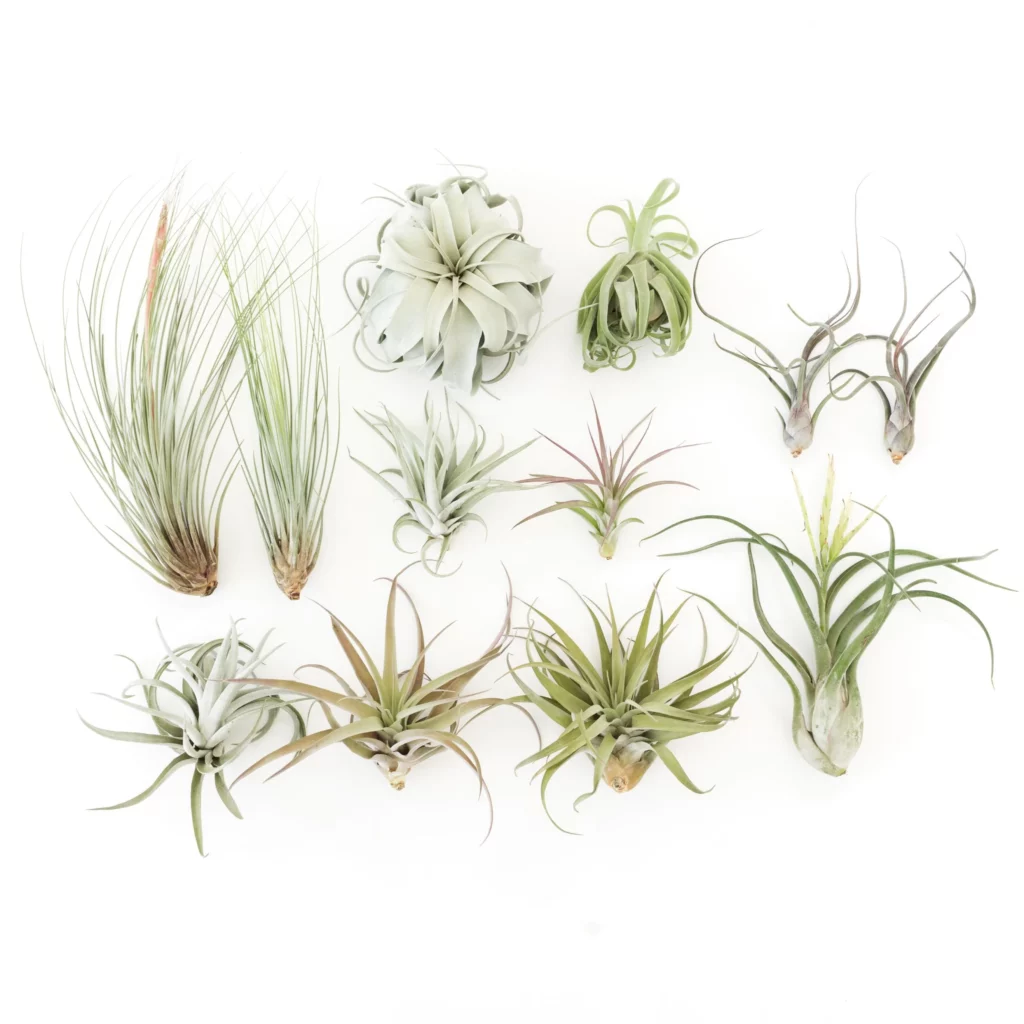
What Are Flowering Air Plants?
In the botanical world, Flowering Air Plants come from the Tillandsia family.
That’s about 500 different species, each unique, and all soil-less!
These plants, aka epiphytes, attach themselves to other plants, rocks, even tree trunks, and absorb water and nutrients from the air.
Hence the name – air plants.
This adaptation is what makes them a hot favorite for indoor gardens and ornamental displays. You get greenery without the mess of soil, and the maintenance?
A breeze.
Tillandsias’ Survival Strategy:
Despite their ethereal beauty, don’t be fooled , these plants are tough cookies.
They have found a way to survive harsh environments by changing their approach to growth. Here’s how they do it:
- Unlike most plants, their leaves do the heavy lifting of absorbing water and nutrients.
- Their roots serve as anchors, not nutrient absorbers. They simply help the plant attach to its host.
Then there’s the pièce de résistance – the flowers. A blooming air plant offers a floral show that’s worth the wait.
Once the flower dries, snip it off to make way for new growth, fondly known as “pups.”
And just like us, they love a bit of warmth. They thrive in it, actually.
So, keep them cozy, and they’ll keep you captivated with their charm.
In a nutshell, the world of Flowering Air Plants is fascinating, diverse, and surprisingly low maintenance.
Their ability to grow without soil, their adaptive skills, and their spectacular flowers, they add a touch of magic to any living space.
Caring for Flowering Air Plants
Lets get into the “how-tos” of keeping your Flowering Air Plants healthy and blooming.
Watering and Moisture
Now, air plants and water have a pretty unique relationship. Instead of taking in water through roots like most plants, air plants primarily soak it up through their leaves. Picture this: me, in my comfiest loungewear, holding my Tillandsia like a precious baby and gently submerging it into a bowl of distilled water. Yeah, you heard it right, a bath-time ritual for my plant baby!
Every one to two weeks, I give my air plants this spa treatment, a thorough soaking of about 20 to 40 minutes. Post bath, it’s drying time, where I flip the plant upside down to drain excess water from its leaves. Remember, sitting water is a no-go as it can cause rot. And for my friends living in high humidity areas, misting is your new best friend. Two to three times a week, give your plants a good spritz. Use distilled water or collected rainwater, avoid tap or softened water – those chemicals? Not so friendly to our Tillandsias.
Light and Temperature Requirements
Just like you, air plants love catching some rays, but without the sunburn. They need bright, indirect light, with a dose of 10 to 12 hours per day. Beware, though, more than 12 hours can be a bit of a sunshine overload.
Got only fluorescent light indoors? Don’t sweat it! Your air plants will be just fine. Temperature-wise, aim for a comfy 50-90°F (10-32°C). Just remember to shield your air plants from extremes
Air plants hail from the jungles of South America, so they dig humidity. But here’s a twist: I live in a dry area. So, what’s a plant parent to do? Humidifiers can be your best friend in such situations. I use one in my living room where my plants are, and they seem to enjoy it.
Humidity and Air Circulation
Air plants hail from the jungles of South America, so they dig humidity. Ideally, a 40-60% humidity level would make them feel right at home. But hey, they’re versatile. Even lower humidity levels are okay if you care for them right.
Thinking about a terrarium? Great idea, but remember, air plants like to breathe. Ensure your terrarium has ventilation for proper air circulation.
Fertilizing and Nutrients
You might be thinking, “They don’t need soil, so no need to fertilize, right?” Not quite, my friend. Despite their soil-less nature, air plants still need nutrients to thrive.
Once a month, treat your plants with a water-soluble fertilizer, ideally designed for Tillandsias. Just dilute it to a quarter strength and introduce it during their watering ritual. Be careful, though, over-fertilizing can damage the delicate trichomes – the fuzzy little structures on the plant’s surface that help absorb water and nutrients.
When it comes to fertilizing, I was a bit intimidated initially.
I mean, these are air plants, right? They’re supposed to survive on air.
But then I learned that even these resilient beauties need a little help from time to time.
My tip? Use a water-soluble fertilizer specially designed for Tillandsias.
And remember, less is more. No one likes an overzealous plant parent!
In the end, remember, your journey with Flowering Air Plants is all about balance – water, light, humidity, and nutrients.
And with these handy tips, I promise you’ll have a blooming beauty gracing your living space, bringing you joy and peace.
Flowering and Reproduction of Air Plants
Blooming Process
These cute little guys, mostly from South America and Mexico, have a lifestyle we might envy. No soil, no problem, right?
Their blooming process is what you might call the ‘it’ event of their lives.
They then send their pollen off on an airborne journey. To land on and fertilize another air plant.
some stars of the Tillandsia family, like Tillandsia aeranthos and Tillandsia xerographica, don’t need a partner.
They’ve got self-fertilization down to an art.
Pups and Offshoots
once they’re done with their blooming they get busy producing pups.
These are like cute little mini-me’s sprouting right from the base of the mother plant.
These pups grow, they mature, and like every teenager, they itch to detach from the momma plant. Off they go into the world, carrying forward the legacy of their species.
Lifespan and Reproduction
The air plant life is an emotional rollercoaster. They bloom, they produce pups, and then, like the end of an era, the mother plant begins her gradual decline.
It’s a tearjerker, but then again, it’s nature’s beautiful cycle.
Propagation
For all you gardening enthusiasts out there, this is where you step in.
Once these pups have grown to be about one-third of their momma’s size, you can gently detach them.
Then comes the fun part – setting up their new home that offers bright indirect light and enough humidity.
Life Cycle
The life cycle of air plants is a three-act drama – blooming, producing pups, and the creating of seeds.
Nature’s own reality show, if you ask me. Over time, these plants grow, mature, and put on a blooming spectacle.
This then leads to the production of pups, who then break free from their momma plant and continue the cycle.
Decorative Uses and Display
Air plants, also known as Tillandsias, are versatile houseplants that can be used to create diverse and visually striking displays that brighten up your living space.
Here’s a fun fact: you can actually turn your air plants into living artwork.
I’ve got a few displayed in a hanging glass terrarium, and it’s a conversation starter every time I have guests over.
Have you ever considered creating a piece of living art with your plants?
Creating an Air Plant Terrarium
One popular way to display air plants is by creating a terrarium.
A terrarium allows you to showcase the beautiful colors and unique shapes of these tropical plants in a miniature environment.
To create an air plant terrarium, choose an appropriate glass container with good ventilation to prevent excess moisture buildup and rot.
Make sure to use a base layer such as sand, pebbles, or moss to provide support and add visual interest; driftwood or other natural elements can also be incorporated for an artistic touch.
Air plants usually thrive when exposed to bright, indirect light, so it’s essential to position your terrarium in an area with adequate lighting for them to flourish.
Remember that air plants can be sensitive to water quality – when misting or soaking your plants, try using rainwater or distilled water to prevent issues caused by chlorine in tap water.
Arranging an Air Plant Wreath
Another creative way to display air plants is by arranging them into a wreath.
This stunning piece of living art adds a touch of the tropics to any room and can be easily hung on walls or suspended from the ceiling.
To create an air plant wreath, select a sturdy base like a wire or wooden frame.
Attach your air plants to the base using a non-damaging adhesive or tying them with fishing line or string.
Wrapping Up
Are you, by any chance, thinking about how you’ve walked past air plants in garden stores or maybe even at your friend’s place, never knowing all this?
I’ve been there too, trust me.
But hey, look at us now! We’re officially part of the air plant fan club.
Become a Part of the Air Plant Conversation
Share your thoughts, experiences, or questions in the comments below.
Better yet, do you have a proud air plant parent moment to share?
I’ll love to see it.
For more tips on caring for these green pals and creating your own indoor space, check out our other posts.
If you’re just embarking on your air plant journey, don’t forget to grab our free guide to get started.

